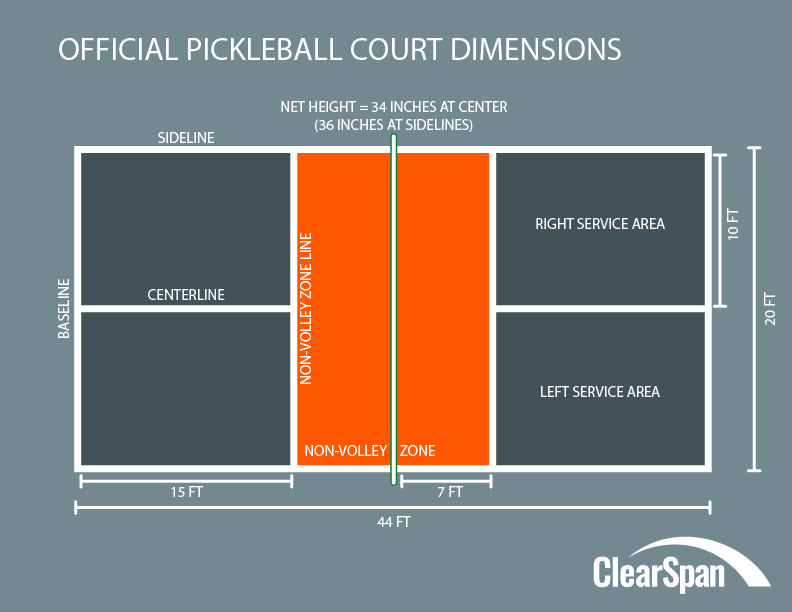How to Select the most effective Pickleball Judiciaries Design & Building in Illinois and Midwest
Key Consider the Construction of Pickleball Courts: From Site Option to Last Surfaces
The construction of pickleball courts includes a variety of important variables, beginning with the selection of a suitable website that stabilizes access with ecological factors to consider. Essential elements such as court dimensions, surface materials, and drainage systems significantly impact not only the quality of play but also the longevity of the facility.
Site Option Criteria
When beginning on the building of pickleball courts, it is important to nail down the site selection standards that will certainly make certain optimum playability and availability. The area needs to be quickly reachable for players, preferably located near houses or recreation center, to motivate engagement.
Furthermore, the surface should be level and stable, as irregular ground can lead to security dangers and influence gameplay. Ample drainage is also essential; choosing a website with excellent water overflow will certainly assist maintain court problems during unfavorable weather.
An additional important consideration is the schedule of energies. Accessibility to electrical energy and water is required for lights and upkeep purposes. In addition, proximity to parking centers is crucial, assisting in easy accessibility for players and viewers alike.
Environmental aspects can not be neglected; all-natural shade from trees can enhance player convenience, while exposure to prevailing winds might disrupt play. Zoning laws and community assistance need to be considered to make sure that the task aligns with regional standards and receives the backing it requires for effective execution. By thoroughly examining these standards, stakeholders can create an inviting and practical setting for pickleball enthusiasts.
Court Dimensions and Layout
To make sure optimum gameplay and adherence to laws, the dimensions and layout of pickleball courts should be carefully defined. A typical pickleball court gauges 20 feet in size and 44 feet in size for both songs and increases play. The recommended layout includes a non-volley zone, frequently described as the "kitchen area," expanding 7 feet from the web on either side. This location is critical, as it affects gamer positioning and shot option - Illinois and midwest.
The internet height is evaluated 36 inches at the sidelines and 34 inches at the center, creating a small dip that affects ball trajectory. Court markings are equally vital; lines need to be 2 inches vast and unique in color to guarantee exposure.
Furthermore, a buffer area bordering the court is a good idea, usually prolonging 5 to 10 feet beyond the sidelines and standards to fit players' activities and boost security. Proper format and measurements not only make certain conformity with official laws but additionally improve the overall having fun experience, fitting both recreational and affordable play. Cautious preparation in these areas is extremely important to the effective building and construction of pickleball courts.
Surface Product Options
Choosing the right surface area material for pickleball courts is critical for making sure optimum player efficiency and security. The choice of surface area can considerably influence gameplay, including round bounce, traction, and player convenience.
There are several choices available, each with its unique characteristics. Asphalt is a prominent choice because of its resilience and reduced maintenance needs. It offers a strong having fun surface that can hold up against various weather condition problems but might require regular resurfacing.
Concrete is another commonly used material, providing superb longevity and a smooth surface. It permits consistent sphere bounce yet can be tough on players' joints, making it less preferable for lasting play without proper cushioning.
For those looking for enhanced comfort and shock absorption, cushioned acrylic surface areas offer a viable alternative. These surfaces integrate a base layer with an acrylic overcoat, giving improved traction and a softer feel, which is helpful for lowering the threat of injuries.
Lastly, synthetic turf is acquiring traction, specifically for multi-purpose facilities. Its flexibility and lower maintenance needs make it an appealing choice, though it may not offer the exact same sphere action as typical hard courts. Careful consideration of these options will ensure an optimal playing environment.
Drain and Illumination Considerations
Appropriate drainage and effective lighting are important components in the construction of pickleball courts, considerably influencing both playability and security. Sufficient drainage systems prevent water buildup, which can bring about unsafe surfaces and damage to the court framework. A properly designed water drainage strategy incorporates sloped surfaces and ideal products to help with read water flow far from the playing area - Illinois and midwest. This not only protects the stability of the court but additionally decreases downtime as a result of bad weather condition problems.
Illumination is similarly essential, particularly for courts intended for evening use. The placement of lighting fixtures ought to be strategically intended to eliminate shadows Full Report and offer even distribution of light across the court.

Last Finishes and Upkeep
After dealing with drainage and lighting factors to consider, focus turns to the final coatings and continuous maintenance of pickleball courts. Common alternatives include acrylic coatings and specialized sporting activities surface areas that offer optimal grip and cushioning.

Seasonal upkeep could consist of resurfacing every couple of years, depending on use and environmental aspects. Correctly keeping nets, court lines, and surrounding areas is just as crucial to provide a safe and enjoyable playing experience. By purchasing high quality surfaces and adhering to an organized upkeep timetable, center owners can ensure their pickleball courts remain in exceptional condition for many years to come.
Verdict
In conclusion, the successful building of pickleball courts hinges home on thorough interest to several vital variables. High quality finishes and a durable upkeep routine are important for protecting the court's problem, boosting the general experience for players and viewers alike.